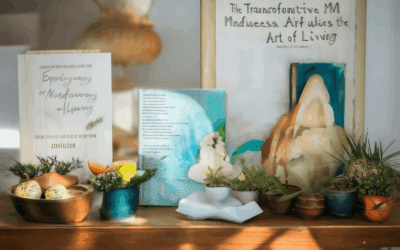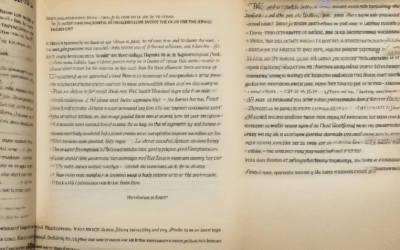Embarking on a journey through creative writing is to step into a world where stories come alive, and self-discovery becomes your greatest ally. A journey through creative writing isn’t just about crafting words—it’s about unlocking the transformative power of your imagination. It’s about diving into the essence of storytelling, where every word carries the weight of your thoughts, emotions, and experiences. It’s about discovering who you are as a writer and finding your unique voice. The creative writing journey is one of both excitement and challenge—where inspiration often strikes when you least expect it, and growth happens when you embrace the process, even when it feels uncomfortable. In this guide, we’ll explore the various facets of this fascinating craft, offering insights, tips, and perspectives that will help you navigate your own creative writing journey with confidence and ease.

The 7 Processes of Creative Writing
Creative writing involves a series of structured steps to bring ideas to life and craft compelling stories or content. Below are the primary processes involved:
- Brainstorming : The initial stage where writers generate ideas and concepts for their work. This step is crucial for exploring various angles and themes.
- Outlining : Creating a blueprint or structure to organize the ideas gathered during brainstorming. This helps in maintaining focus and coherence.
- Drafting : Writing the first version of the content. This is where the actual creation happens, translating ideas into a tangible form.
- Revising : Going back to the draft to make improvements. This includes refining details, fixing errors, and enhancing the overall quality.
- Editing : A deeper level of revision focused on grammar, syntax, and clarity. Editors ensure the piece reads smoothly and accurately reflects the author’s intent.
- Rewriting : Restructuring sections of the text for better clarity, flow, or impact. This step ensures the final product is polished and engaging.
- Presenting : Sharing the completed work with an audience. This could involve publishing, submitting for review, or presenting in a public forum.
What is the Hero’s Journey in Creative Writing?
The hero’s journey is a fundamental concept in narrative structure, developed by mythologist Joseph Campbell, that outlines a universal pattern of stories across cultures. This timeless framework helps writers create compelling stories by guiding characters through a transformative adventure. Below are the key stages of the hero’s journey:
- The Ordinary World: The hero begins in a familiar environment, often facing routine challenges.
- The Call to Adventure: A disruption or invitation launches the hero into the unknown.
- Refusal of the Call: The hero hesitates or resists the call, fearing the risks involved.
- Meeting the Mentor: A wise figure provides guidance, tools, or encouragement.
- Crossing the Threshold: The hero enters a special world, often requiring a change in mindset or preparation.
- Tests, Allies, and Enemies: The hero faces obstacles, encounters friends and foes, and gathers support.
- Approach to the Inmost Cave: The hero nears the central challenge or ordeal.
- The Ordeal: The hero confronts the greatest test, often a life-or-death situation.
- Reward: The hero receives a critical gift or insight that strengthens them.
- The Road Back: The hero begins the return journey, now wiser and stronger.
- Resurrection: The hero undergoes a final transformation or trial before achieving their goal.
- Return with the Elixir: The hero successfully brings the prize or lesson back to the ordinary world.
This structure ensures that stories resonate deeply with audiences, providing a satisfying emotional arc while allowing for originality and customization.

What is a Creative Journey?
A creative journey is the transformative experience of exploring, experimenting, and expressing one’s unique perspective on life. It’s a continuous process of discovery, where individuals engage in activities that stimulate imagination, inspire innovation, and foster personal growth. Whether through art, writing, design, or any form of creative expression, the journey is deeply personal and often non-linear.
1. The Journey is in the Moments, Not the Destination
The creative journey isn’t about achieving a perfect final product but rather embracing the messy, unpredictable nature of creation. It’s found in the little moments—those spontaneous ideas, unexpected inspiration, or simple acts of curiosity. As author John Spencer notes, the most profound creative work often emerges from ordinary life. For instance, a walk in nature, a conversation with a friend, or a quiet moment alone can spark a creative breakthrough.
2. Creativity is Everywhere, Even in Small Things
Creativity isn’t reserved for artists or professionals. It’s a skill everyone possesses, waiting to be unlocked. The creative journey involves noticing the world around you, finding beauty in the mundane, and turning everyday experiences into something extraordinary. For example, a child’s drawing or a home-cooked meal can be forms of creative expression. The key is to approach life with fresh eyes and an open mind.
3. Collaboration is Essential
The creative journey often thrives in collaboration. Working with others can challenge your perspectives, inspire new ideas, and lead to innovative solutions. Whether it’s a team project at work or a joint creative endeavor with friends, collaboration enriches the creative process. It’s important to seek out diverse viewpoints and be open to feedback, as this can lead to breakthroughs you wouldn’t achieve alone.
4. Embrace Imperfection and Failure as Part of the Process
Many people fear failure or perfectionism, which can hinder creativity. However, embracing imperfection is crucial to the creative journey. Every great artist has had works that didn’t meet their expectations, but these missteps often teach valuable lessons. Learning to accept and learn from mistakes allows for growth and resilience, which are essential for sustained creativity.
5. Technology and Tools Enhance the Journey
In today’s digital age, tools like digital art software, AI writing assistants, and creative apps can be powerful allies on your creative journey. They provide new ways to explore and express ideas, but always remember that creativity is human-driven. Technology should serve as a tool, not a crutch, to enhance your unique vision.
6. Mental Health and Well-being Matter
A healthy mind is the foundation of a creative journey. Prioritizing mental health through mindfulness, adequate sleep, and self-care practices ensures your creative engine stays fueled. Burnout and stress can kill creativity, so it’s essential to nurture your well-being alongside your artistic endeavors.
7. Sustainability and Purpose Drive Creation
Aligning your creative work with a purpose greater than yourself can deepen your journey. Creating sustainably, whether through eco-friendly practices or contributing to social causes, adds meaning and impact to your work. It’s about leaving a positive legacy that resonates with future generations.
The creative journey is a lifelong adventure, one that rewards curiosity, resilience, and authenticity. By embracing the process, learning from failures, and staying true to your unique vision, you can unlock the full potential of your creativity and leave a lasting mark on the world.

What Are the 5 Steps in the Creative Writing Process?
The creative writing process involves a series of steps that help transform ideas into compelling stories, essays, or other forms of expression. Below are the five essential steps to guide you through the creative writing journey:
- Gather Inspiration : Start by identifying themes, characters, or settings that interest you. Look for inspiration in everyday life, books, movies, or conversations. Jot down ideas or notes to keep track of your thoughts.
- Develop a Theme or Plot : Once you have an idea, develop a theme or plot that ties your story together. Consider the purpose of your writing, whether it’s to inform, entertain, or express personal feelings. Brainstorm potential outcomes and conflicts to create a compelling narrative.
- Draft the First Version : Write down your ideas in a free-flowing manner. Don’t worry about perfection at this stage—focus on getting your thoughts onto paper or screen. This is your first draft, and it’s okay to be messy.
- Revise and Refine : After drafting, read through your work carefully. Make corrections for grammar, spelling, and clarity. Revise sentences to enhance flow and impact. This step is crucial for turning a rough draft into something polished.
- Edit for Final Touches : In the final editing phase, ensure your work is free of errors and conveys the intended message effectively. Pay attention to tone, style, and overall coherence. Proofread for any remaining issues before finalizing your piece.
By following these steps, you can create a structured and engaging piece of writing that resonates with your audience. Remember, creativity is a process, and each step builds upon the previous one to bring your vision to life.
The 5 Cs of Creative Writing
Creative writing is a craft that requires a unique blend of skills and mindset. Below are the five essential components, often referred to as the “5 Cs,” that define successful creative writing:
- Content
- Craft
- Creativity
- Clarity
- Coherence
1. Content
Content is the foundation of creative writing. It involves choosing a subject matter, developing characters, and constructing a narrative around a central theme or idea. Effective content engages readers emotionally and mentally, drawing them into the story or message you aim to convey.
2. Craft
Craft refers to the technical aspects of writing, such as syntax, grammar, sentence structure, and pacing. A well-crafted piece is one that reads smoothly, with attention to detail in how ideas are presented. This includes the use of descriptive language, dialogue, and scene setting to enhance the reader’s experience.
3. Creativity
Creativity is the spark that ignites the writing process. It involves thinking outside the box, exploring unconventional ideas, and bringing originality to your work. Whether it’s a fictional world, a unique character, or a fresh perspective on a familiar topic, creativity is what sets your writing apart.
4. Clarity
Clarity ensures that your message is easily understood and that your audience can follow your narrative without confusion. This involves choosing precise language, avoiding ambiguity, and maintaining consistency in your storytelling. A clear writer is one who communicates effectively and directly.
5. Coherence
Coherence is the element that ties your writing together, ensuring that every part of your piece fits seamlessly into the whole. This includes maintaining a consistent tone, style, and structure throughout your work. A coherent piece feels intentional and purposeful, guiding the reader through the story or argument in a logical manner.
By mastering these five components, writers can create works that are not only engaging but also deeply meaningful and impactful. Whether you’re writing fiction, poetry, or professional content, understanding and refining the “5 Cs” will elevate your craft and resonate with your audience on a deeper level.

What is the golden rule of creative writing?
The golden rule of creative writing centers around intentionality and purposeful communication. Every word you write should serve a deliberate purpose, contributing meaningfully to your narrative or message. This principle ensures that your work remains focused, coherent, and impactful.
- Every word must have a purpose and contribute to the overall message or theme.
- Maintain consistency in style, tone, and pacing throughout your work.
- Understand your audience and tailor your language to resonate with them effectively.
- Avoid unnecessary words or fluff that doesn’t enhance the story or message.
- Review and revise your work to refine its clarity and impact.
By adhering to these principles, writers can create works that are not only engaging but also deeply meaningful to their readers. Remember, the foundation of great writing lies in intention and purpose, guiding every decision you make in crafting your stories or messages.
For more insights into creative writing and storytelling, visit Peter Spirito and explore his collection of personal essays and reflections.




0 Comments